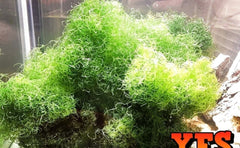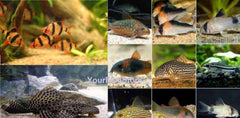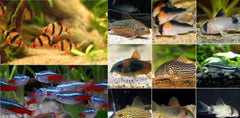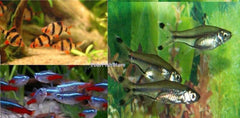X2 Assorted Clove Polyp Green Colony - Med 3" - 4" Each

x2 ASSORTED CLOVE POLYP GREEN - MED 3" - 4" EACH - FREE SHIPPING
*This Package includes x2 (two) Med Clove Polyp Colony
Common Names: Star Polyps, Green Star Polyps, sometimes shortened to GSP.
Scientific Name: Briareum violacea or Briareum violaceum. Formally classified as Clavularia viridis.
Description:
Green Star Polyps are small typically light tan to yellowish-green to a bright fluorescent green polyps connected together by a rubbery purple colored mat. Larger colonies can create a dense carpet. The polyps are open during the day and retract at night or when disturbed.
Natural Environment:
?
Hardiness
Green Star Polyps are extremely hardy and a popular soft coral for beginners.
Lighting
Will tolerate fairly low light levels, but will tend to develop brighter or deeper colors under higher intensity lighting.
Water Current:
Prefers moderate water motion though seem to do OK even under strong water currents.
Aggressiveness:
High. While they do not seem to have much of a stinging capability, Green Star Polyps can spread quickly under good conditions and quickly overrun their neighbors. Once established, they can be hard to remove from the rock work and many aquarists have regretted adding them to their tank.
Feeding:
Green Star Polyps are photosynthetic and require no supplemental feeding. It is unknown if they will take any prepared foods.
Supplements & Water Chemistry:
Basically if your water hasn’t killed anything, Green Star Polyps will survive but ideal conditions are the same as for most corals.
Salinity should be maintained between sg 1.024 and 1.026.
Alkalinity should be maintained in the dKH 7-12 range
Calcium should be maintained at 400 ppm or higher.
pH should be maintained between 8.1-8.4
Temperature:
Does well within a range of at least 74º to 84º F
Tank Positioning:
Best positioning for Green Star Polyps is to put them somewhere that you can control their growth if necessary. This may be an isolated rock on the sand or similar type of island from which they cannot escape. They will also cover the back wall of the aquarium which can give a nice look. On smooth surfaces, it is easy to scrap part of the mat off to control the spread.
Propagation:
Easy to propagate. Large mats can sometimes be lifted and cut with scissors into smaller pieces. These small pieces can then be attached to a suitable substrate such as rocks for the coral to attach to. Rubber bands can hold the cuttings in place until they attach to the substrate.
Customer Reviews
Based on 1 review
Write a review
QUESTIONS & ANSWERS
Have a Question?
Be the first to ask a question about this.














